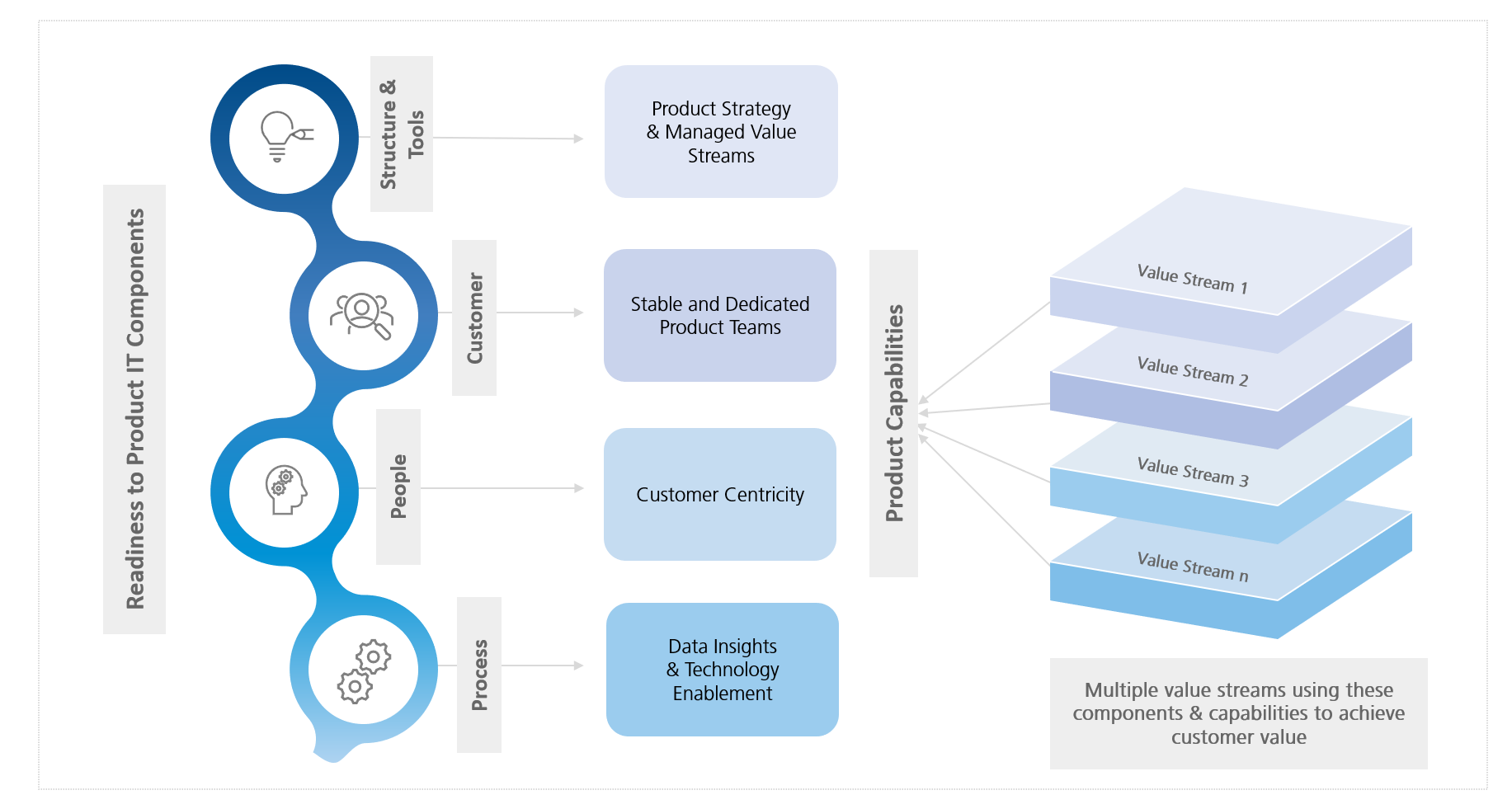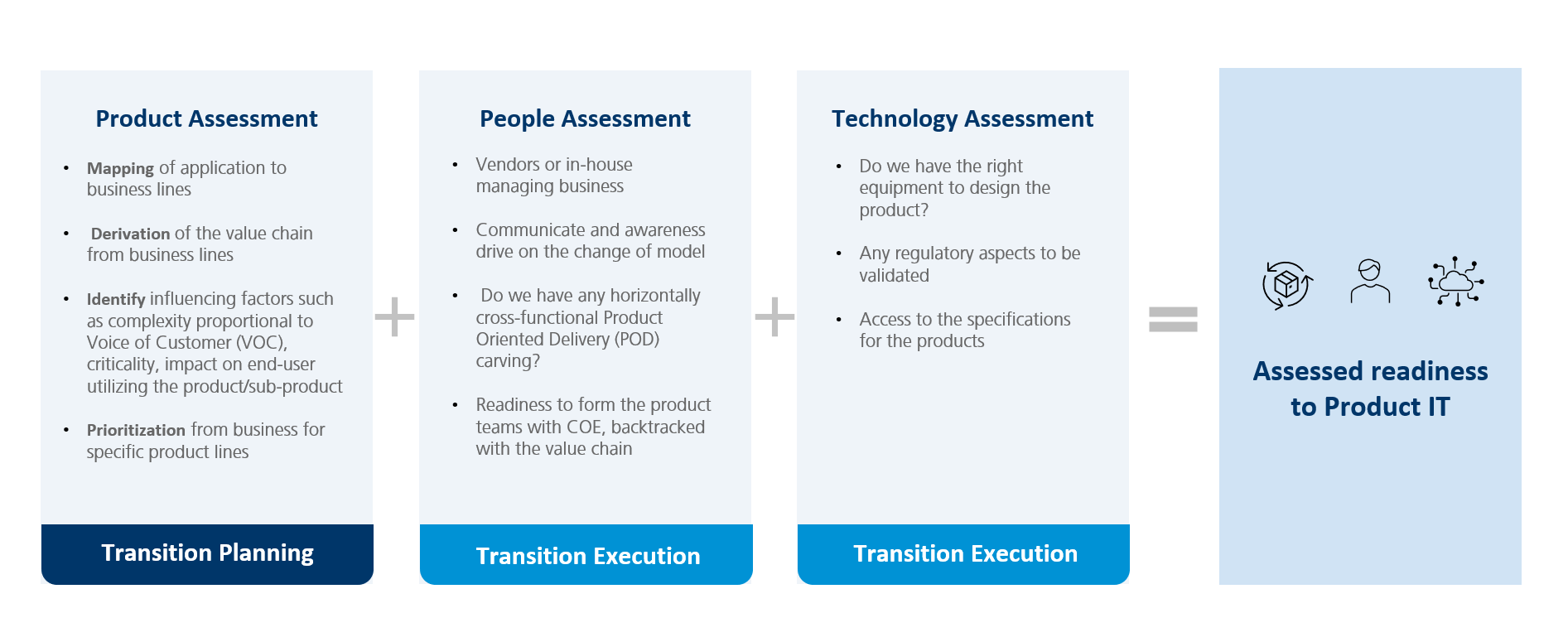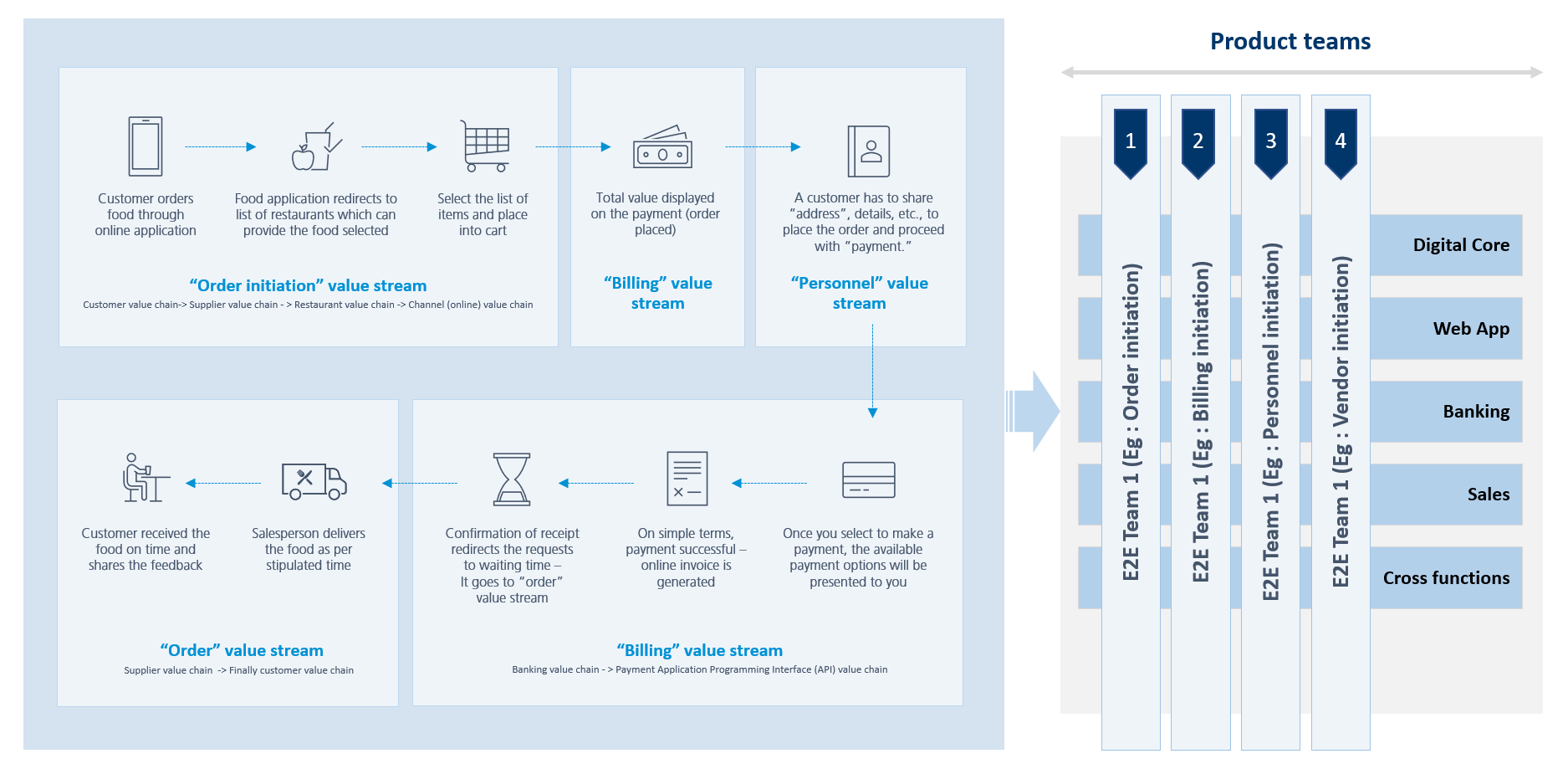Maximizing the Value of Your Business through Product IT Operating Model
Have you ever wondered why Avis Car Rentals, Tesla, or Husqvarna has been a differentiator in their industry? Tesla has consistently improved their Return on Investment (ROI), and their cars are known for their “dynamic personalization” feature. Each vehicle has a unique personality that caters to the driver’s preferences. Tesla has emerged as a trailblazer and visionary for the future by prioritizing customer needs and integrating innovative concepts such as “digitization” and “agility.”
To help us better understand the influencing factors for a seemingly simple activity, let’s take an example of the car rental company and the process it takes for someone to “rent a car.” Here are the various taxonomies that need to be considered in this process:
- Search for a car that fits your preferences, including the desired date, location, and offer price.
- To proceed, select the provider and follow the pre-defined instructions on the page.
- Reservation and prepay for the car or pay at pickup.
- Pick up your rental and go to the location where you have reserved your rental car.
- Make sure your rental contract is intact, and then you start off your journey.
These steps must work seamlessly together to provide the user with a positive experience. So even though the process to rent a car may seem simple, much orchestration is needed to ensure a successful transaction. If any of the abovementioned steps experience a delay in the IT process, the order will not be completed on time. All these tasks contribute to the business’s value when provided as a service.
In the context of ‘car rental,’ the value stream mapping comprises distinct chains such as order initiation, customers, identity, and billing value chain.
Unlike the traditional model, which focuses on technical aspects, scale of operations, and delivering a plan, the product IT operating model takes a different approach. It emphasizes the outcome provided to the client, its value, and the communication and visibility achieved through fast feedback loops within each product team. This approach helps bridge the gap between IT and business, leading to improved outcomes. With project-based traditional models proving untenable, 66% of leaders have transitioned to the product-centric business, with increased digitization and modernization applied in their markets. This led product managers to think and strategize the demand coming from customer feedback, thereby keeping their product launches “agile and open for dynamic requests” to embrace the turnaround and expected business value.
Here is a four-step process outlining the progression from the current state to an IT product-based model, including the tasks performed during the transition to reach the desired target state.
Step 1 – Strategize
The strategy involves putting ideation at the forefront and focusing on the roadmap for a specific “line of businesses” for the customer’s journey, considering factors such as:
- Value delivered – Identify the value we would bring to the organization.
- Product strategy – Ensuring relevance to the desired value-added outcome.
- Value streams – Mapping ideation to post-sale services and support.
- Customer centricity – Adopting a persona-based model adaptable to growing needs.
- Product teams – Building highly specialized and dedicated teams motivated by value creation rather than just delivery.
- Data insights and technology – Connecting the product strategy with the technology strategy to ensure continuous application-level improvement.

Figure 1 ─ Assess components for readiness to “product IT model”
By incorporating these factors, we can revolutionize our IT delivery and make it more customer-oriented, flexible, and optimized for success.
Stage 2: Assess the current state
The next step is to examine the current state of the business lines, applications, and platforms, mapping them to the value chain. This assessment can be done during the service transition phase.

Figure 2 ─ Product assessment during the transition phase
Stage 3: Transform to future state
We learned how to provide customer value through a product-focused approach using the car rental service as an example.

Figure 3 ─ Product IT operating model
This way of operating has been designed to fit with the Scaled Agile Framework (SaFE), but every organization can adapt it to suit their needs. The “product team” creates value (value chain) rather than just focusing on the result. This team includes the core group of people involved in development, testing, and engineering, who have the power to decide how things are done. A “Center of Excellence” (COE) also monitors each product team’s progress and assesses their value, dependencies, and deviations from the plan.
Stage 4 – Promote and enhance.
To measure success, focus on providing customer-driven features and capabilities, minimizing time-to-results, and ensuring alignment between business and IT perspectives. In the end, this strategy aids companies in addressing IT performance challenges tied to customer value, enabling ongoing process enhancements fueled by customer feedback.
Businesses can continuously monitor the benefits and value added to customers by adopting the product IT operating model from two perspectives:
- Business perspective – Market expansion and easy to integrate, reduce the license cost
- IT view – Modularize the solution with a modernized technology stack (instead of a monolithic)
Service transition during the journey toward product IT model
- Service transition is a crucial component of adopting a product IT model. The process involves carefully aligning pre-planning and planning phases to visualize the transition from the incumbent to the potential supplier.
- During the “strategy” stage, the focus is on defining a product and sub-products derived from the existing “line of business.” It also involves identifying skill gaps for the product IT core team, estimating cost efficiencies for the next 2-3 years, and assessing the value of the operating model for both business and IT.
- Moving to the “assess” stage, detailed information is gathered about business workflows, value streams, customer-personified use cases, functional/technical specifications, technology-enabled offerings, and integrations among product lines. A thorough assessment is conducted, including the roles and people involved in the end-to-end process, leading to a clear architectural plan for the future model.
- By following this well-structured approach, organizations can smoothly transition to a product IT model, driving enhanced efficiency and success in today’s competitive landscape.
Conclusion
The journey towards a product-focused operating model can be time-consuming, to begin with. However, the adaptability to explore the journey toward the product IT operating model can start during the service transition. This allows companies and IT to rethink ways to add value to the enterprise and how product IT intersects with business, technology, and customer experience. By embracing this approach, organizations can navigate the challenges of the transition and achieve their desired outcomes in an efficient and customer-centric manner.
Latest Blogs
Core banking platforms like Temenos Transact, FIS® Systematics, Fiserv DNA, Thought Machine,…
We are at a turning point for healthcare. The complexity of healthcare systems, strict regulations,…
Clinical trials evaluate the efficacy and safety of a new drug before it comes into the market.…
Introduction In the upstream oil and gas industry, drilling each well is a high-cost, high-risk…




